East Springs Animal Hospital
Minimally Invasive Procedures
Minimally invasive procedures are at the cutting edge of Veterinary science. Many procedures can be performed with this technology.

Minimally invasive procedures accomplish surgical goals by disrupting the smallest amount of tissue as possible, minimizing pain, and reduces the risk of complications.
Laparoscopic ovariectomies (spays) can be performed in this manner. The procedure starts with a five-millimeter incision to allow a camera to see into the abdomen. The magnification of the camera allows for the ability to evaluate the abdominal organs for abnormalities prior to performing the spay. A second 5-10mm incision is made to introduce a vessel-sealing device called a Ligasure, which allows the surgeon to separate the ovaries from their attachments inside the abdomen. Once the ovaries are removed from the abdomen, the incisions are closed and within a few hours your pet is ready to go home.
Gastropexy is another preventative procedure, which is done with minimally invasive technology. This procedure is done to reduce the risk of a condition called gastric dilatation-volvulus (GDV) or bloat. GDV is an acute condition where the stomach distends with gas, twists on its axis, and creates life threatening circulatory and perfusion injuries. To prevent this, laparoscopic equipment is used to sew a small part of the stomach to the abdominal wall. This increases the stability of the stomach and reduces the risk of the stomach twisting.
Laparoscopic procedures require advanced training and specialized equipment. Dr Bret Morgan, DVM has completed these courses and have been successfully performing minimally invasive procedures since 2004. For further explanation of options or procedures, please call East Springs Animal Hospital and one of our staff members will be glad to assist you.
